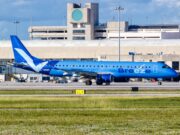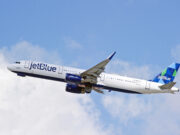
Loss of Communications under an IFR flight plan requires a detailed understanding of the regulatory requirements set forth by the FAA. These requirements direct pilots to adhere to a predetermined plan, thus creating a predictable flight path for air traffic controllers.
It is imperative to understand the importance of troubleshooting the situation which may include utilizing a different radio panel, or even attempting to communicate through a handset. Once the determination has been made that the aircraft has lost communications, the pilot must squawk the loss of communications with transponder code 7600. This action allows air traffic controllers to be alerted to the situation while coordinating the necessary handoffs to the most appropriate ATC facility.
The actions that follow depend on whether the aircraft is flying under VMC or IMC. If under VMC, the pilot is expected to continue operating VFR and land as soon as practical. Likewise, if at any point in the flight the aircraft encounters VMC conditions, landing as soon as practical is expected at the nearest suitable airport.
Two criteria are of critical importance – altitude and routing. While operating under IMC with an inoperative radio, pilots are ultimately responsible for terrain and obstacle clearance. Hence, pilots must adjust their altitude to meet the highest of the following – minimum IFR altitude, last assigned altitude, or expected altitude. While the minimum IFR altitude may be the MEA, if operating outside of an airway, the OROCA altitude is applicable.
In terms of routing, the last provided vector takes precedence. If none given, proceed directly to the last assigned waypoint, expected fix, or if not applicable, as filed per the IFR flight plan.
Initiating a descent will vary depending on a number of factors, including the clearance limit and any EFC time (or ETA, if not applicable). Simply put, a clearance limit may be the destination airport or a fix. Careful review of the regulations will assure compliance. Holding may be necessary due to an early arrival prior to the ETA. Plan accordingly and do not initiate an early descent.
Upon landing, if the airport is controlled, expect to receive light-gun signals, and follow them to the final parking position. Given that ATC will not be controlling the approach, consider utilizing the most precise approach available, particularly under low ceiling or low visibility situations. Likewise, review NOTAMs to ensure the approach you will be utilizing is operable. Operating without the aid of ATC will certainly increase workload and pose a threat not routinely evaluated.
Losing communications has the potential to be a manageable albeit abnormal procedure by carefully adhering to FAR 91.185. Ultimately, the PIC is responsibility for all decisions. The procedures set forth by the regulation have a single intent; to allow both the controller and the pilot to have a plan, even when voice communications are impaired.

























































These mnemonics sound familiar…
“AMC”: Assigned, minimum or cleared (filed) altitudes.
“Ave F”: Assigned, Vectored, Expected, Filed route.